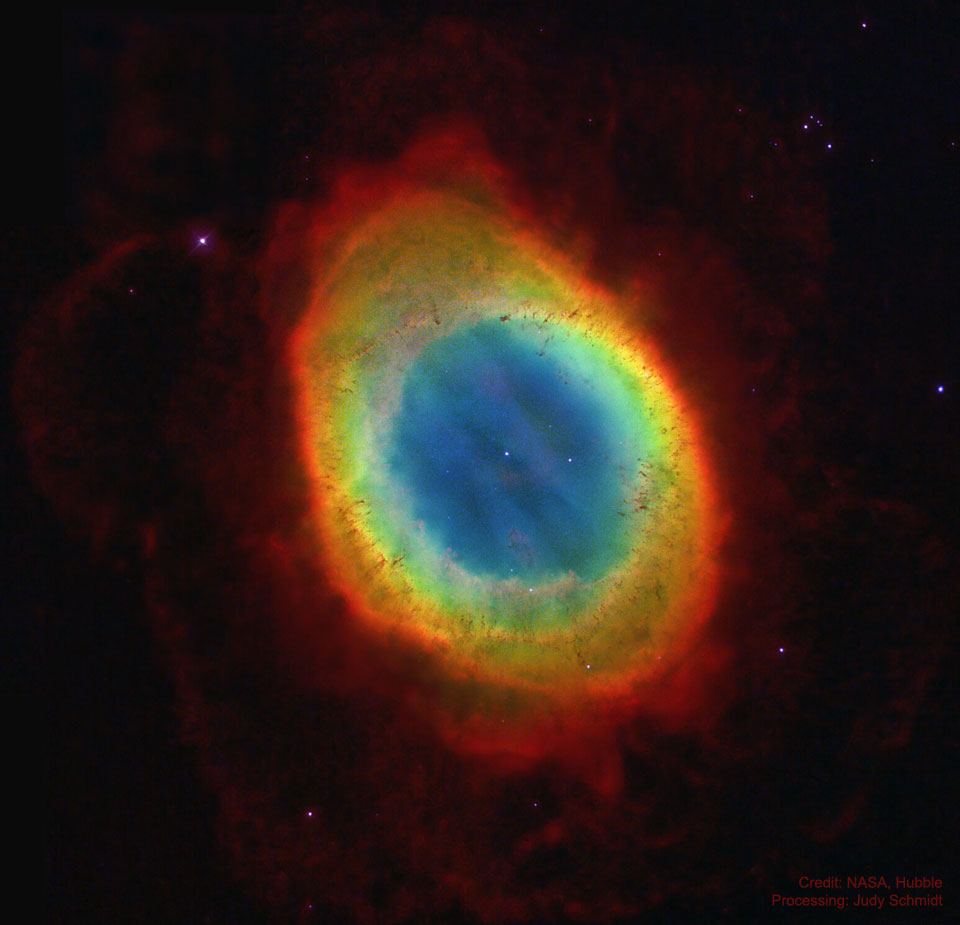2021年8月17日
M57: The Ring Nebula from Hubble
Image Credit: NASA, ESA, Hubble Legacy Archive; Processing: Judy Schmidt
Explanation: Except for the rings of Saturn, the Ring Nebula (M57) is probably the most famous celestial circle. Its classic appearance is understood to be due to our own perspective, though. The recent mapping of the expanding nebula’s 3-D structure, based in part on this clear Hubble image,indicates that the nebula is a relatively dense, donut-like ring wrapped around the middle of a (American) football-shaped cloud of glowing gas. The view from planet Earth looks down the long axis of the football, face-on to the ring. Of course, in this well-studied example of a planetary nebula, the glowing material does not come from planets. Instead, the gaseous shroud represents outer layers expelled from the dying, once sun-like star, now a tiny pinprick of light seen at the nebula’s center. Intense ultraviolet light from the hot central star ionizes atoms in the gas. The Ring Nebula is about one light-year across and 2,500 light-years away.
Share the Sky: NASA Open API for APOD
Tomorrow’s picture: rings upon Ring
M57: 环状星云的哈勃影像
影像提供: NASA, ESA, Hubble Legacy Archive; 影像处理: Judy Schmidt
说明: 除了土星环之外,环状星云(M57)可能是最著名的环状天体。不过它经典的外貌,据如今的理解其实是源自地球的视角。最近根据这张极清晰的哈勃太空望远镜影像,为这个扩张星云建构的三维结构显示,这团星云的结构是一个相对致密的甜甜圈,围拱着中央形似美式足球的辉光云气。从我们所在的地球看出去,视线正好顺着足球的长轴,直视星云环的正面。当然,以这团已被大量研究的行星状星云,它发光的物质并非来自行星,而是来自类太阳恒星在死亡的过程中所抛出的外壳,而星云中心的针尖般光点,则是这颗恒星的孑遗。而这颗炽热的中心星,发出强烈的紫外光电离云气的原子并激发它们发光。距离2,500光年左右的环状星云,宽度约有1光年。
分享天空: NASA APOD开放API
明日的图片: rings upon Ring



